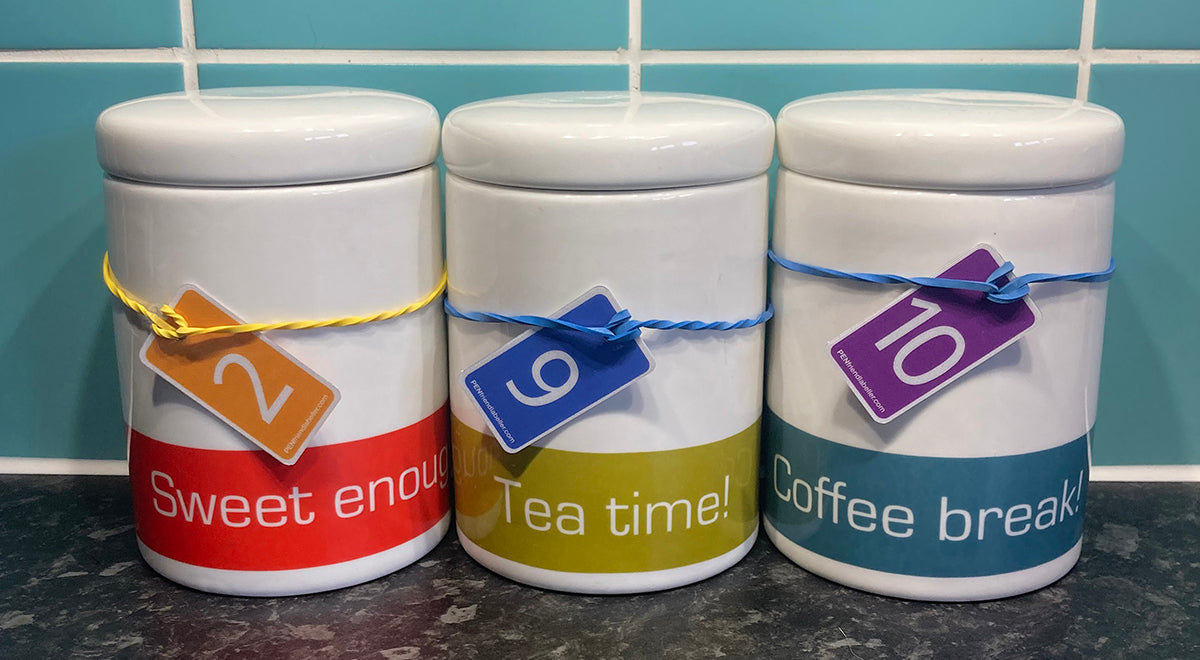Whether you’re adapting to sight loss, or starting to find your way around cooking for yourself, there’s plenty of ways you can adapt your kitchen to make cooking easier.
1. Good lighting
If you have some sight good lighting can make tasks easier. You may find under cabinet lighting helpful, or prefer a portable light that you can adjust and move around as required. When choosing lighting, look for options that maximise useful sight, are free of glare, offer an even level of light and easy adjustment. (The Thomas Pocklington Trust’s lighting guide has more detailed advice you may find useful.)
2. Colour contrast
Preparing light coloured food on a dark chopping board, and dark food on a light chopping board can make this task easier if you have some sight. You may find the same principle helpful when choosing mixing bowls, knives and other utensils.
Use tactile bumps or Tacti-mark (a liquid plastic that sets hard in the shapes you create – dots, lines, curves, and more) to mark buttons and dials making them easier to find.
4. Talking products
Our talking scale with easy-to-see measuring jug makes it easy to measure wet and dry ingredients (a separate braille gauge for measuring liquids by touch in this jug is also available).
Our easy-to-use talking microwave announces everything and has tactile controls. It has no complicated programs – just set power level and time, and press ‘start’.
If you need to cook on a hob, our talking induction hob is a great way to cook with confidence. With spoken functions and tactile controls, you can boil, heat, sauté and fry easily.
If you have a smartphone, you can ask its assistant to set a timer for you. If you don’t, then a talking kitchen timer can help stave off baking disasters and burnt saucepan bottoms!
To check that food is hot enough all the way through, add a talking food thermometer to your utensil drawer.
5. Safety first
Use the right knife for cutting and slicing. A blunt knife is not safer than a sharp one because you need to exert more pressure and the knife might slip. An alternative is to use a food processor – with the appropriate chopping or slicing attachment – for fruits and vegetables.
If you enjoy freshly sliced bread, this adjustable bread slicing guide may make that task easier.
Some air fryers may be accessible to you – this review of air fryers lists the pros and cons of some of the more accessible ones.
If you are baking and roasting, consider some five-fingered oven gloves (rather than mittens) as they protect more of your arms from accidental burns and give you a much better grip on your baking trays and tins.
To stop chopping boards or mixing bowls slipping while you’re working, consider putting some non-slip Dycem underneath.
6. Get labelling
You can make your own labelling solutions, such as large, handwritten labels or magnetic alphabet labels. Braillists can create their own braille labels with a braille labeller and tape.
One of the most adaptable labelling solutions for the kitchen is the RNIB PenFriend audio labeller, which allows you to record your own labels. These might be short and sweet (“tinned peaches”) or more detailed to include cooking instructions, for example.
You can choose from a wide range of labels – tactile, self-adhesive labels; reusable can and bottle labels; magnetic labels, tags on elastic bands; laundry labels – to label almost anything you will find in your kitchen. Our PenFriend hints and tips guide contains lots of suggestions for ways to get the most out of the labeller and your labels.
- Visit RNIB’s Cooking page for more tips on preparing food.




